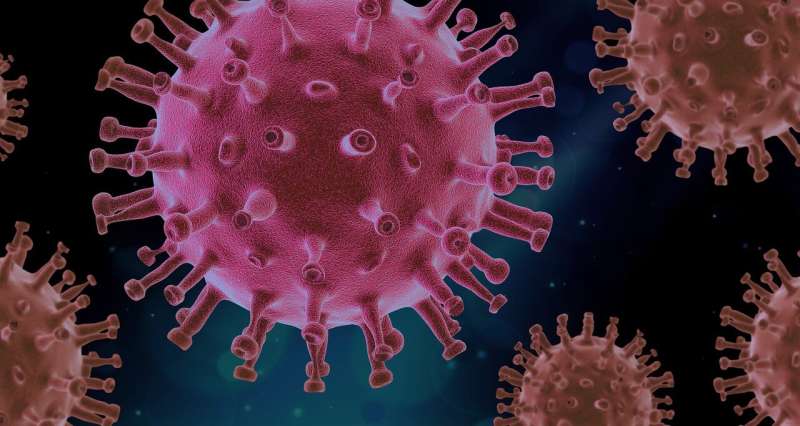Credit: Pixabay/CC0 Public Domain
New modelling from Te Pūnaha Matatini has suggested that public health measures will need to remain in place for the entire duration of Aotearoa New Zealand's vaccine rollout to avoid hospitalisations and fatalities from COVID-19 outbreaks.
But lead author Nic Steyn says that the good news is "increasing levels of vaccination will make maintaining an elimination strategy easier and allow the country to eventually move from relying on population-wide interventions like lockdowns to more targeted controls like contact tracing in the later stages of the rollout."
"We're going to need to use the vaccine in conjunction with the other layers of protection that we have at the moment," says Professor Michael Plank. "This means that border restrictions, the Alert Level system, community testing and contact tracing will need to remain in place."
The team used an age-structured model of COVID-19 transmission in Aotearoa New Zealand to estimate how increasing levels of immunity through vaccination can slow the growth of an outbreak. The models combined the latest available data on vaccine effectiveness with social contact survey data that estimates how much contact there is between people in different age groups across the country.
This modelling provides an indication of the potential for spread at a broad-scale national level and includes a range of scenarios at various stages of the vaccine rollout, from contained local outbreaks to an unmitigated epidemic.
Professor Shaun Hendy says that "we're still vulnerable to COVID-19 and will remain vulnerable even once the vaccine rollout is complete, but the results show that things will get better as the rollout progresses."
This modelling also includes the first New Zealand-specific estimates of the percentage of the population that needs to be vaccinated to reach population immunity. The lowest estimate of the population immunity threshold that the models produced was an 83% vaccination rate across the total population. This was based on data from older variants of the virus with an estimated basic reproduction number of 4.5 and assuming the vaccine reduces transmission by 85%. Emerging data on newer more transmissible variants suggests a higher threshold, although this remains uncertain.
"Until we get close to that threshold we are still at risk of a significant health impact from an outbreak that would include overwhelming our healthcare capacity," says Hendy.
"While the rollout is still underway, the elimination strategy gives us the best options for controlling any outbreaks and protecting people who haven't yet been vaccinated."
Vaccination rates will vary across Aotearoa New Zealand, so even if population immunity is reached nationally, communities with vaccination rates lower than the national average will remain at risk of hospitalisation and fatalities from COVID-19 outbreaks. Further modelling work will be needed to investigate this.
Professor Michael Plank cautions that "we're not going to one day magically hit a population immunity threshold where we can open the borders and everything goes completely back to normal. It will be more of a gradual relaxation of border measures alongside continued testing and contact tracing measures."
"If we relax border restrictions, we will see COVID-19 cases and it's quite likely that we'll see outbreaks. The way to protect against those outbreaks is to get vaccinated."
There is still a lot to learn about the Pfizer vaccine and its effectiveness in different population groups. These models will need to be updated as new data is collected internationally about vaccine effectiveness and transmissibility of new variants.
Plank says that these results deliver a clear message: "As more of the population gets vaccinated, we still need to go as hard as we've ever done on testing, contact tracing, scanning in, hand sanitising and wearing masks."
"The vaccine rollout is good news," says Hendy, "but life is not going back to normal for some time."
Provided by Te Pūnaha Matatini
























